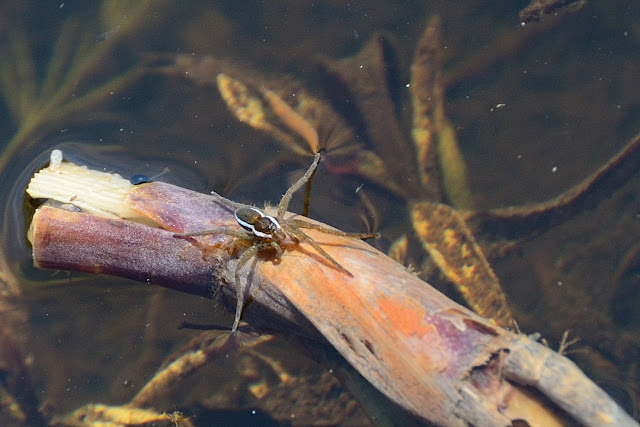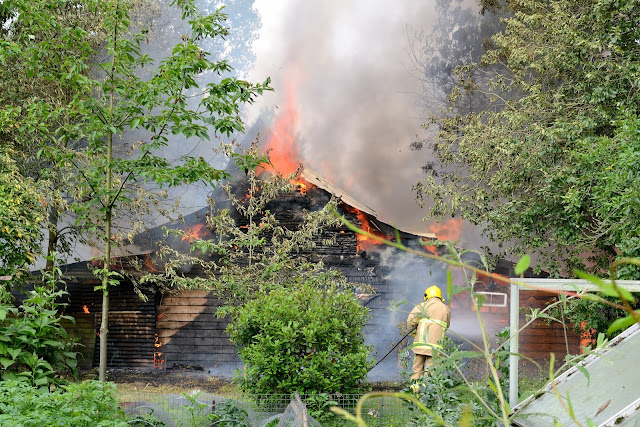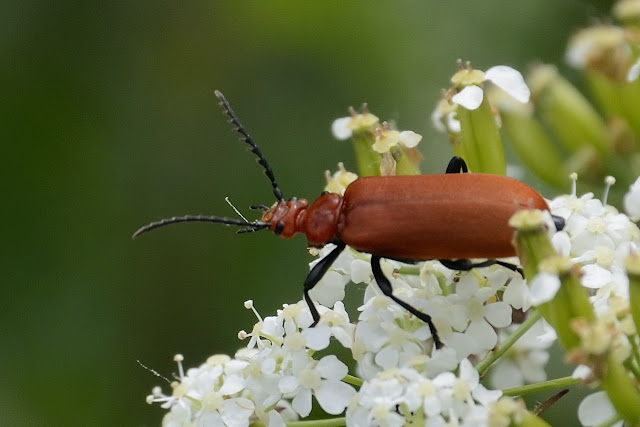Sometimes it is awe inspiring to consider the variety in nature that surrounds us, and which we often take for granted, or just plain `don't see`! The images that follow were all taken by me in a period of 21 days in July and could pass unnoticed if I had been in a rush. Unfortunately, for many people there is little alternative to the modern day hustle and bustle. I am one of the lucky ones, I know. Firstly, the star of the week for me ......
....... the Fen Raft Spider. The Raft spider is a large, chunky spider that lives around the edge of ponds and ditches, and on wet heaths and bogs. Adults sit at the edge of the water, or on floating vegetation, with their front legs resting on the water's surface in order to feel for the vibrations of potential prey. Using the surface tension of the water, they chase out on to the water to catch their prey, which will even include tadpoles or small fish. Raft Spiders will also swim underwater, often diving beneath the surface when threatened.
The much rarer Fen Raft spider is similar to the Raft Spider, but is only found in two places in the UK, one of which is a Suffolk Wildlife Trust nature reserve, which is where I took these images. If you want more information on these fascinating creatures, follow this link.
Bee gathering nectar.
The Ringlet butterfly
The Speckled Wood
Pest or not, the Garden Snail
Brown Argus
Brown Argus with wings open
Common Green grasshopper
Small White
Common Blue
Small tortoiseshell butterfly
Essex Skipper
Cinnabar moth caterpillar
The beautiful Banded Demoiselle
A Green Veined White - up to its neck!
Stag Beetle or Lucanus cervus if you are into your Latin
Peacock
Four Spotted Chaser
And last, but by no means least - Reed Dagger Moth caterpillar
All in all a great collection of creatures with all their differing colours and habitats, many more I possible passed by. These are the potential casualties to our Climate Change problem, if we don`t start doing something now.























































